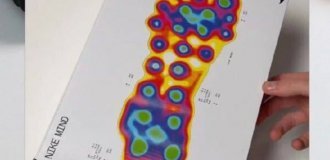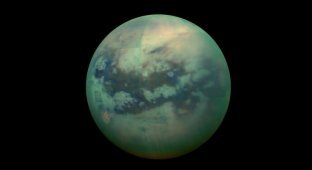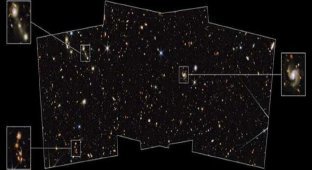The true colors of the universe: NASA combined images from the space telescopes "James Webb" and "Chandra" (5 photos)
At first glance, these images can be easily creations of neural networks or paintings from a contemporary art exhibition. But these are real space images created by combining images of two NASA's most powerful telescopes: the James Webb Space Telescope and X-ray observatory "Chandra". 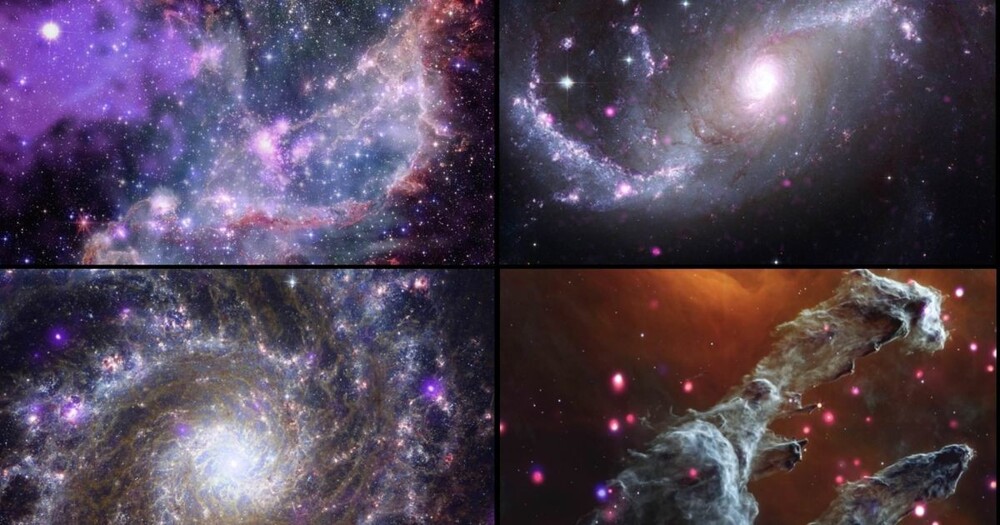
“When several NASA telescopes observe the same cosmic region, the true colors of the universe are revealed, - said in NASA. - Each image combines x-rays "Chandras" - a form of high-energy light - with infrared data from previously published images of "Webb"; and both are invisible naked eye,” the space agency explained.
NASA also included data from the Hubble Space Telescope, which uses optical light from an obsolete space telescope "Spitzer" (infrared) and XMM-Newton European Space agencies (X-ray) and the New Technology Telescope of the European Southern observatories (optical).
The resulting images of the star cluster NGC 346, spiral galaxy NGC 1672, Eagle Nebula M16, and spiral The M74 galaxies are some of the most stunning images in NASA history.
NGC 346 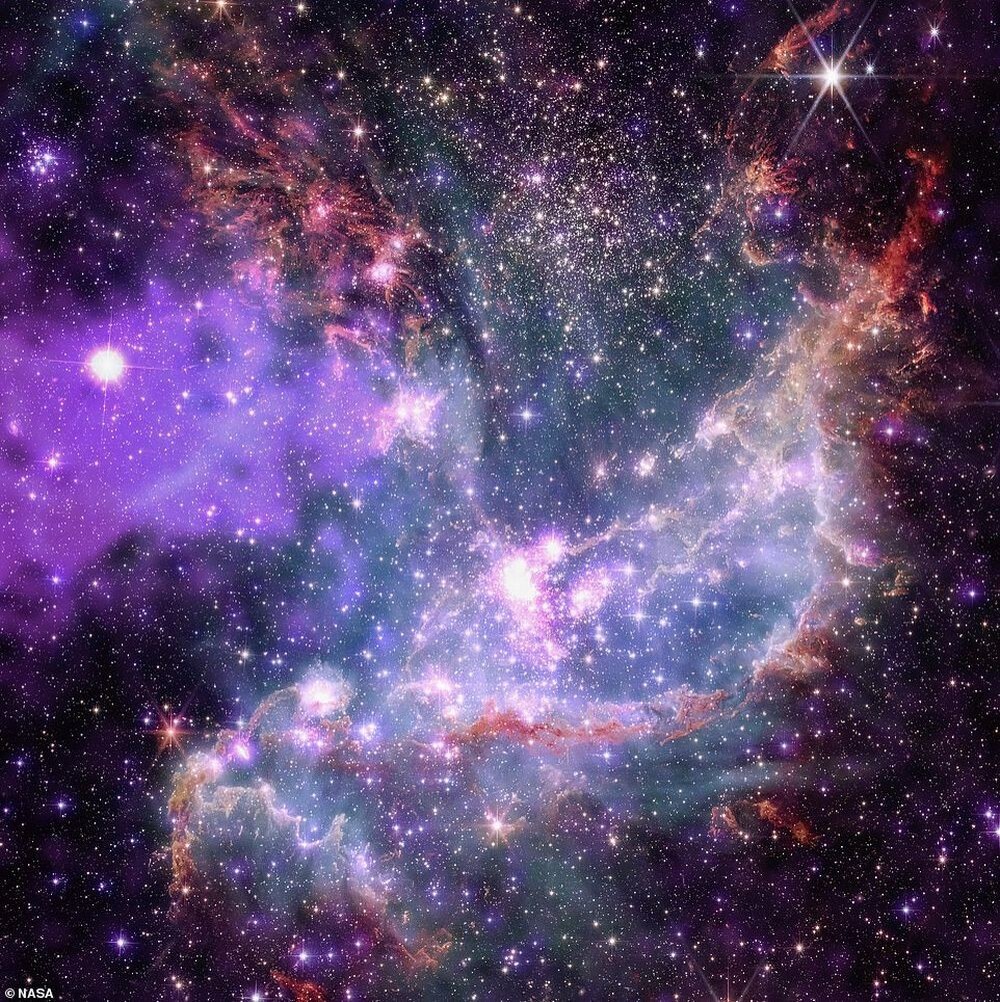
NGC 346 is a star cluster in the Small Magellanic Cloud. about 200,000 light years from Earth. On images taken the James Webb Space Telescope, plumes and arcs of gas and dust that stars and planets use as starting material during its formation. And the purple cloud on the left, caught Chandroy is the remnants of a supernova explosion. "Chandra data also show young, hot and massive stars that send out powerful winds from their surfaces, ”explained NASA.
NGC 1672 
NGC 1672 is a galaxy that NASA classifies as barred spiral galaxy. Chandra discovered compact objects in a spiral galaxy including neutron stars and black holes, as well as the remnants of exploded stars. Hubble and James data Webb" were used to fill the spiral arms with dust and gas.
M16 (Eagle Nebula) 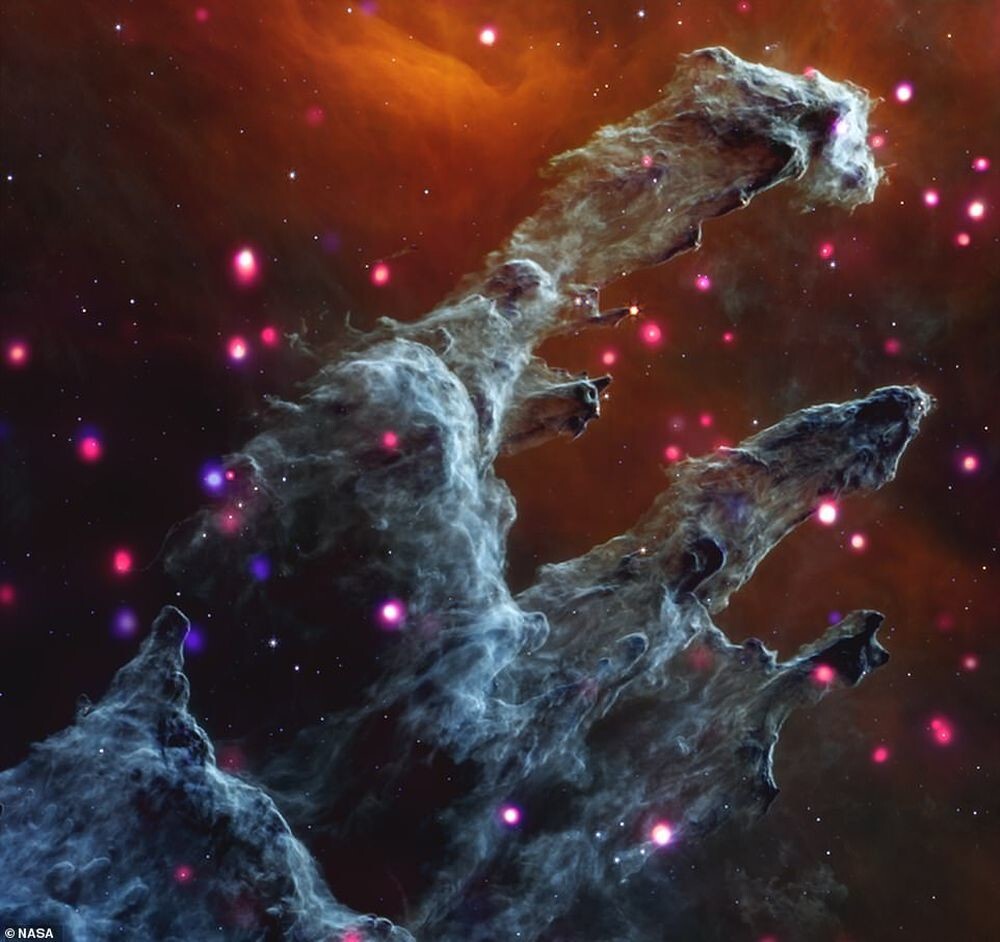
Messier 16, also known as the Eagle Nebula, represents the so-called "Pillars of Creation". In this composite image Webb data shows dark columns of gas and dust covering a few remaining young stars that are just being formed. And the data Chandras look like dots and show young stars emitting lots of x-rays.
M74 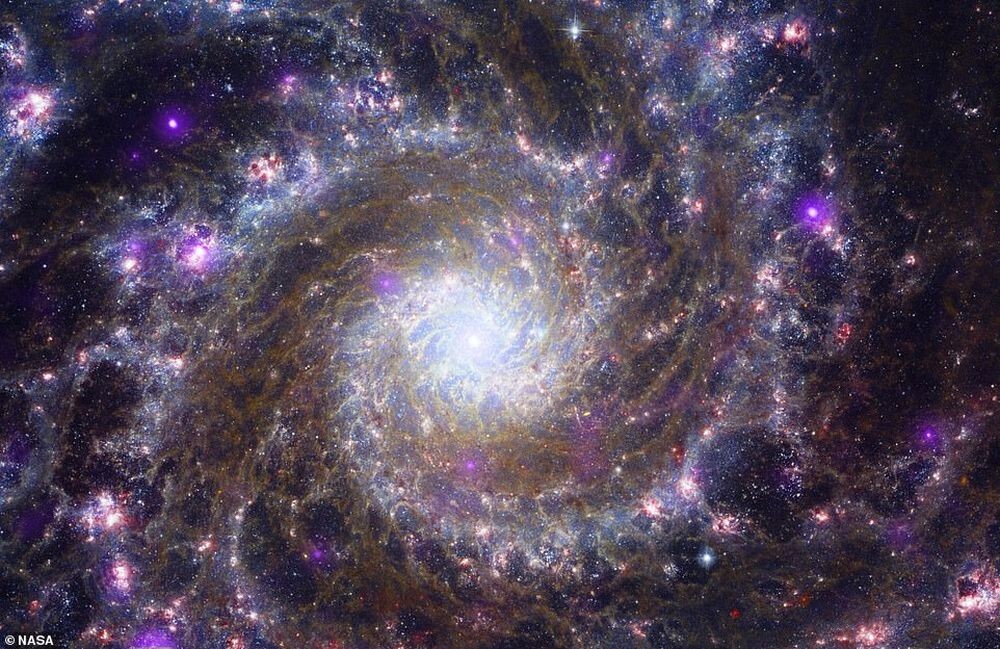
Messier 74 is another spiral galaxy located about 32 million light-years away, which from our vantage point view here on earth is directly in front of us. Messier Galaxy 74 has been nicknamed the Ghost Galaxy because it is relatively dim, making it difficult to detect with small telescopes compared to other galaxies in Charles Messier's famous catalog 18th century,” NASA said in a statement.





